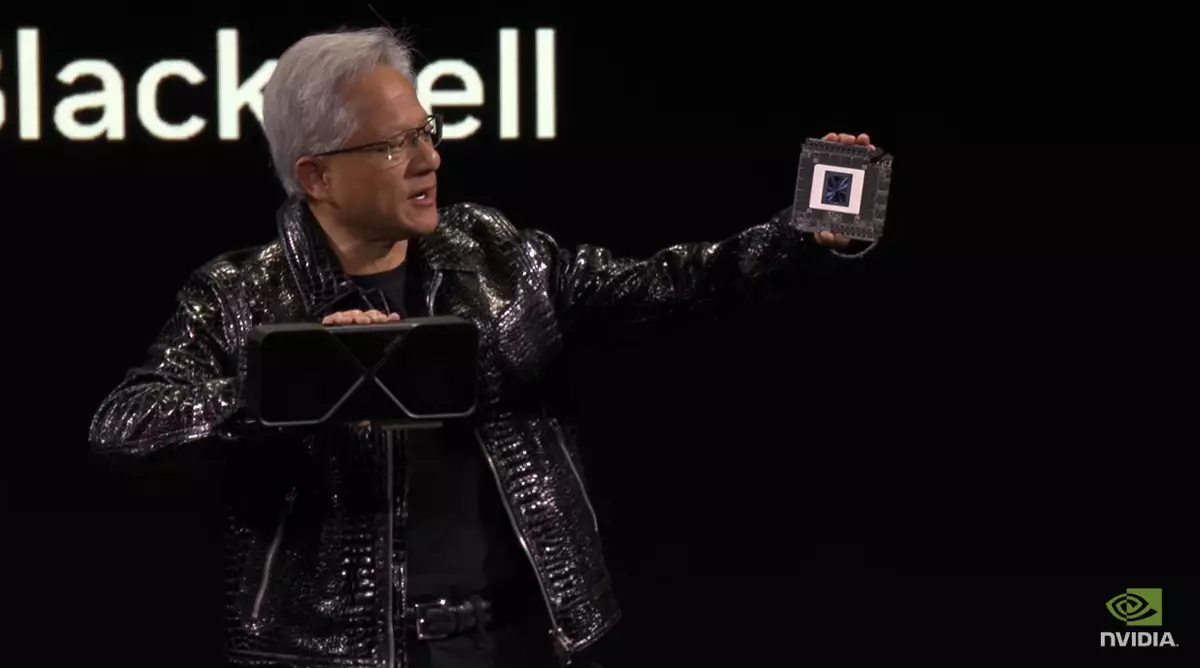The recent unveiling of Nvidia’s RTX Blackwell GeForce GPUs during the CES 2025 keynote has set the stage for significant advancements in gaming technology. With CEO Jen-Hsun Huang announcing the RTX 5070 as a cornerstone of the new lineup, the industry is abuzz with his bold claim that this graphics card delivers RTX 4090-level performance for a mere $549. A juxtaposition of advanced technology and cost-efficiency, this launch serves as a pivotal moment for gamers and tech enthusiasts alike.
Historically, positioning a mid-tier graphics card—like the RTX 5070—against the performance metrics of a premium offering such as the RTX 4090 appears almost reckless. The previous generation’s flagship, the RTX 4090, launched at a staggering price of $1,599, prompting skepticism regarding how a significantly cheaper card could achieve commensurate performance. The answer partially lies in Nvidia’s latest technology: DLSS 4. This newly integrated feature aims to enhance gaming experiences by using sophisticated AI to assist in frame generation, promising players a visual high that does not come with the punishing financial burden.
Huang’s statements suggest that the essence of performance in the gaming world is evolving. The 75 applications and games that will support DLSS 4 at launch show that Nvidia is not merely providing raw power through silicon but rather introducing an enriched gaming experience rooted in smart technological frameworks. This paradigm shift raises questions about traditional metrics of performance as gaming becomes more about interaction and immersion than simple hardware specifications.
At the heart of the RTX Blackwell series lies a transformative framework that propels graphics technology into a new frontier. The integration of Multi Frame Generation with DLSS 4 signifies a departure from the previous norms. By computing a single frame and generating up to three additional frames through AI, Nvidia enhances not just the frame rate but the overall rendering quality, allowing for smoother and more visually stunning gaming experiences.
The RTX Blackwell lineup, dominated by the flagship RTX 5090, reflects a cantilevered strategy. The 5090, priced at $1,999, is expected to deliver double the performance of its predecessor, the RTX 4090, albeit at a higher price point. Meanwhile, the RTX 5080 retains its $999 price tag, touting claims of being twice as powerful compared to the RTX 4080. Such assertions hinge critically on the optimization capabilities brought forth by DLSS 4.
Market Reactions and Future Implications
The reaction to these announcements is likely to reverberate through both consumer gaming communities and the competitive landscape of GPU manufacturing. Several industry insiders anticipated substantial price hikes in the RTX 50-series, yet Nvidia has managed to quench these fears. Though the flagship model comes with a higher price, the broader lineup offers considerable value that may bolster customer loyalty and retention.
Moreover, as the tech world becomes increasingly focused on affordability and performance, Nvidia’s strategy of excellent pricing amidst high-level offerings could serve as a template for future product cycles. As gamers increasingly seek out value, Nvidia’s ability to integrate cutting-edge technology into an accessible ecosystem could mark a transformative period in graphics technologies.
With the launch of the RTX Blackwell series, Nvidia is poised to redefine industry standards. The assertion that a mid-tier card can rival flagship performance opens doors to a democratization of high-end graphics capabilities. As the gaming community prepares for the release of the RTX 5090 and RTX 5080 on January 30, 2025, followed by the RTX 5070 Ti and RTX 5070 a month later, the anticipation surrounding these innovations underscores a broader trend toward more inclusive and immersive gaming experiences.
In merging incredible advancements in AI technology with consumer-friendly pricing, Nvidia not only seeks to elevate the standard of gaming graphics but also to entice a wider audience into the world of elevated digital experiences, ultimately altering the gaming landscape for years to come.

